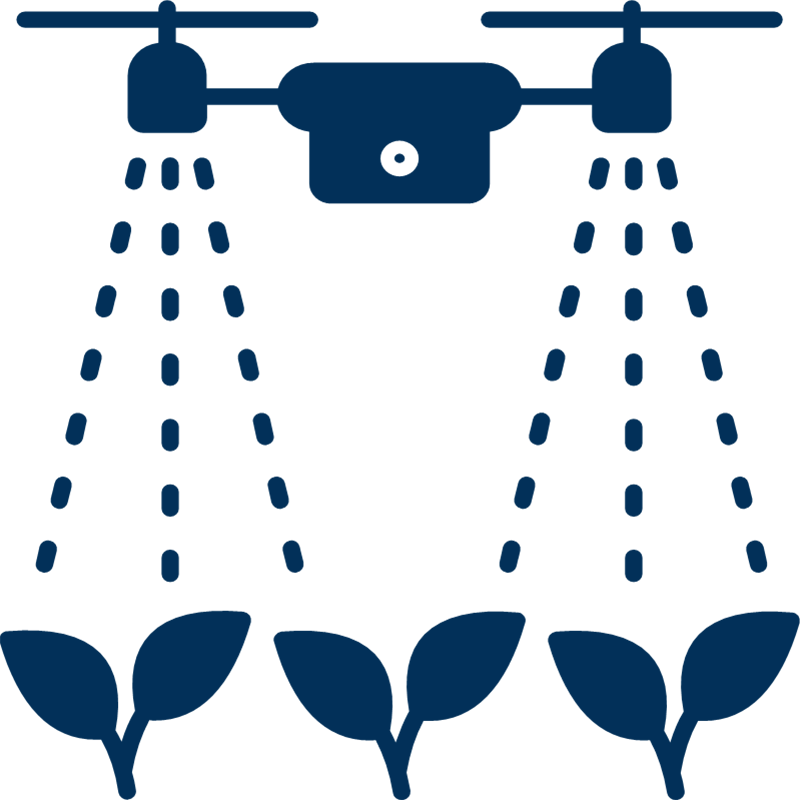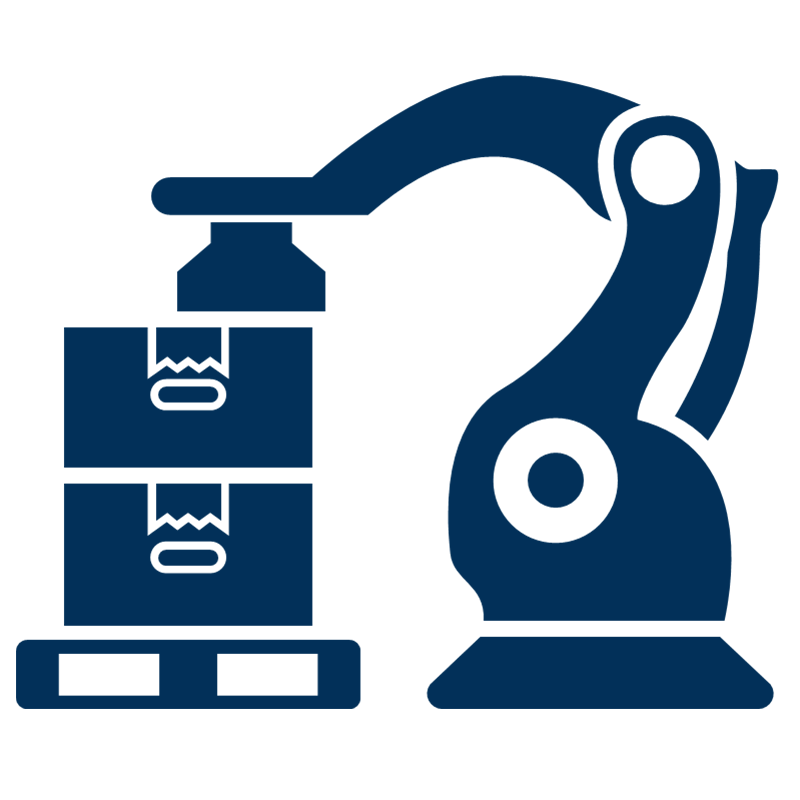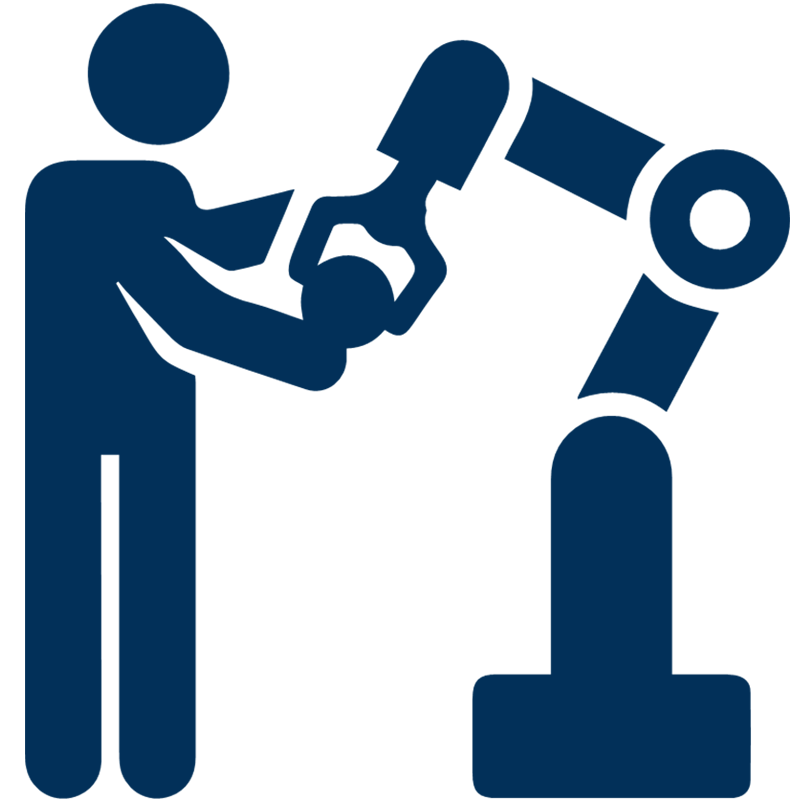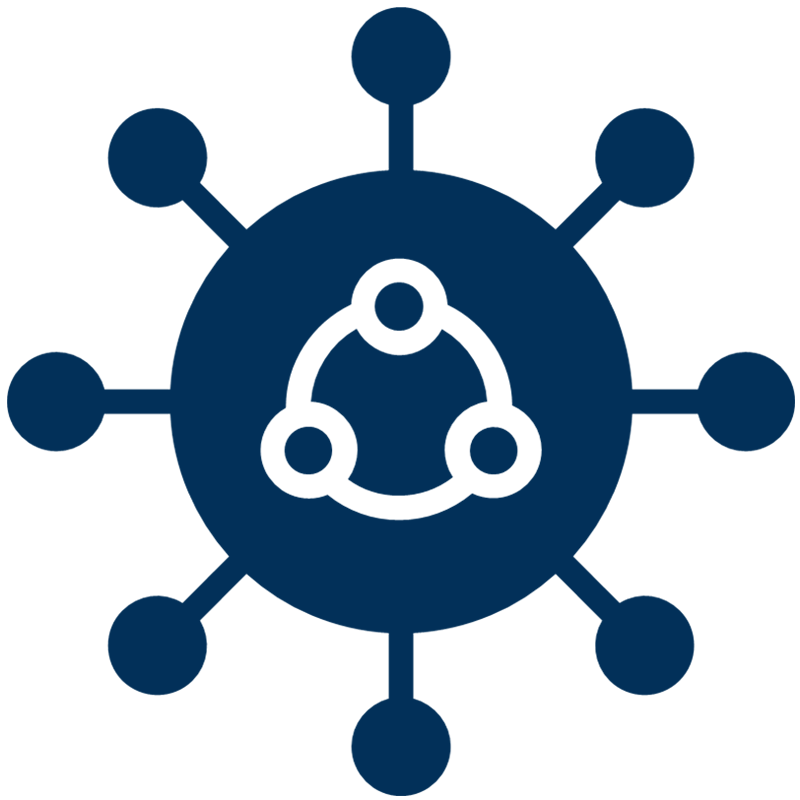Use Cases.
Our use case database tracks 130 use cases in the global enterprise technology ecosystem.
Filters allow you to explore use cases quickly and efficiently.
- (20)
- (20)
- (16)
- (10)
- (6)
- View all 9 Industries
- (20)
- (16)
- (13)
- (10)
- (7)
- View all 7 Functional Areas
- (16)
- (13)
- (11)
- (11)
- (11)
- View all 14 Enabled Capabilities
Selected Filters
130 use cases
|
Additive Manufacturing
Additive manufacturing (AM) is one use case for 3D printing technology. The other primary use case is rapid prototyping. Both use cases refer to the processes of synthesizing a three-dimensional object from successive layers of material. These objects can be of almost any shape or geometry and are produced from a 3D model or other data source. Additive manufacturing is currently much less common than rapid prototyping due to the higher standards for quality and cost competitiveness. It is relatively expensive and time consumptive to produce a prototype using traditional manufacturing technologies. 3D printers can dramatically cut both the cost and time in many cases. And the quality of a prototype can generally be below that of a finished product. In contrast, traditional manufacturing technology is excellent at mass-producing finished products. For this reason, additive manufacturing is currently used primarily to produce customized products, small batches of replacement components, and designs that are particularly challenging for traditional manufacturing processes.
|
|
Advanced Metering Infrastructure
Advanced metering infrastructure (AMI) is an integrated network of sensors, smart meters, and software that empowers end users to monitor and control utilities such as water, gas, and electricity. AMI systems enable the measurement and visualization of time-specific data in real-time, which, combined with remote control capabilities, can help companies and households reduce overhead costs and more precisely track resource consumption. The application of AMI must be complemented by the utilization of advanced security systems to ensure that data and control capabilities cannot be tampered with. This is important because both direct billing and operational decisions are often determined by the data provides by an AMI system.
|
|
Advanced Production Planning and Scheduling
Advanced planning and scheduling (APS, also known as advanced manufacturing) refers to a manufacturing management process by which raw materials and production capacity are optimally allocated to meet demand. APS is especially well-suited to environments where simpler planning methods cannot adequately address complex trade-offs between competing priorities.
|
|
Agricultural Drones
Agricultural drones are a class of unmanned aerial vehicle (UAV). Agriculture monitoring is among the most mature use cases for drones. The use cases value proposition is rooted in the high labor cost of monitoring a wide, rural expanse of agricultural land using traditional ground-based vehicles. In many environments, drones can cover 10 times more land than a ground-based observer in the same amount of time due to their sky-to-earth perspective and ability to fly over barriers. Drones can also be automated for routine assessments, negating entirely the need for human operation.The flight of agriculture drones may be controlled with various degrees of autonomy, ranging from the remote control by an operator located in the vicinity to fully autonomous flight coordinated by onboard computers.Drones are most often deployed in large farm holdings with varying topographic climates. They are also useful in situations where issues related to bacteria fungus, or pests are difficult to manage and require regular monitoring. In addition to cropland, drones are also deployed to monitor aquaculture and forests, as well as poultry, cattle, and other livestock.
|
|
Agriculture Disease & Pest Management
Agriculture disease and pest management uses sensors to monitor for specific pests to understand their activity, location, and behavior patterns. It is done by connecting traps or sensors to report specific pest levels and automating data collection to take more accurate and timely countermeasures. Pest activity can be tracked in different areas of the farm or surrounding areas so that action can be taken before crops are severely affected. This use case also includes integrated pest management, a process to select pest control actions that will ensure favorable economic, ecological, and social consequences. Automating time-consuming aspects of pest management such as measuring indicators and responding to them based on pre-defined rules makes the process more accurate, timely, and efficient.
|
|
Asset Health Management (AHM)
Asset Health Management refers to the process of analyzing the health of an asset as determined by operational requirements. The health of an asset in itself relates to the asset's utility, its need to be replaced, and its need for maintenance. It can be broken down into three key components: 1) Monitoring: Tracking the current operating status of the asset. 2) Diagnostic Analysis: Comparing real-time data to historical data in order to detect anomalies. 3) Prognostic Analysis: Identifying and prioritizing specific actions to maximize the remaining useful life of the asset based on analysis of real-time and historical data.
|
|
Asset Lifecycle Management
An asset lifecycle is the series of stages involved in the management of an asset. It starts with the planning stages when the need for an asset is identified and continues all the way through its useful life and eventual disposal. The basic premise of asset lifecycle management is to extend your assets’ usability as far as you can, without losing any functionality, thereby decreasing total lifetime costs and increasing the economic value-add of the asset. For example, when maintenance is neglected, companies have to struggle with the resulting unexpected breakdowns, long delays, and costly emergency maintenance. Proper asset lifecycle management can improve the process of maintaining and managing valuable assets.
|
|
Augmented Reality
Augmented Reality or enhanced virtual reality, is a technology that seamlessly integrates real-world information and virtual world information. The real environment and virtual objects can be superimposed on the same picture or space in real time. Augmented reality technology can incorporate virtual information (objects, pictures, videos, sounds, etc.) into the real environment, enrich the real world and build a more comprehensive surrounding. Industry can benefit from AR by facilitating the equipment maintenance, guiding the production and manufacturing process of commodities, and improving the marketing champions.
|
|
Automated Disease Diagnosis
Automated disease diagnosis in healthcare is the use of automated data systems to proactively or reactively diagnose diseases. The system contains three main components: medical knowledge base, data processing, and data analytics. First, a semantic-rich knowledge base is built using practical clinical data collected from healthcare institutions. Systems can be based on existing population knowledge databases or can be personalized to factor in lifestyle, hormonal, or other variables that are unique to each patient. Second, an automated integration platform is developed for patients to upload and manage their health data. The data is integrated with their clinical data and is then used as input for the data analytics tool. The automated diagnosis results are retuned and visualized to the corresponding patients and doctors. Data analytics models will be refined using feedback from doctors and patients.
|
|
Automatic Palletizing & Depalletizing Systems
Automatic palletizing and depalletizing systems automate the end-of-line operations of industrial sectors by automating the palletizing of cardboard blanks, boxes, trays, and packages, or by unpacking pallets into units for further processing. Systems can range from simple robotic automation to smart pallets and packaging that communicate details regarding the contents of containers to each other to ensure that palletizing is done accurately with the right products and the right type of handling for each product. Advances in machine vision also enable automation for processes involving non-standardized items, locations, and packaging and stacking patterns by intelligently adjusting robotic movements. These systems can integrate with transportation systems to do advize pre-sorting upstream to better match downstream customer deliveries.
|
|
Autonomous Robots
Autonomous robots are intelligent machines capable of performing tasks in the world independently of either direct human control or fixed programming. Examples range from autonomous drones, to industrial production robots, to your robotic vacuum cleaner. They combine expertise from the fields of artificial intelligence, robotics, and information science.The autonomous robot must have the ability to perceive its environment, analyze situational data in order to make decisions based on what it perceives, and then modify its actions based on these decisions. For example, the scope of autonomy could include starting, stopping, maneuvering around obstacles, communicating to obstacles, and using appendages to manipulate obstacles. There are few autonomous robots in operation today. Even most sophisticated, dynamic robots such as those used in an automotive factory perform according to static programming. And most autonomous robots are only semi-autonomous and will likely remain so even as more fundamental autonomy becomes technically feasible. For example, the Roomba vacuum cleaner does not move according to a pre-programmed route and can modify its route dynamically as its environment changes. However, it has a very limited degree of freedom that is determined by its programming.
|
|
Autonomous Transportation
Autonomous tranportation use control systems and technologies that collect and communicate information flowing between vehicles and any entity that may affect the vehicle. There are several subsets of autonomous transportation, including vehicle-to-vehicle communication (V2V) and vehicle-to-infrastructure (V2I). In all cases, the system would include sensors, such as lidar, that provide awareness of the surrounding environment. The main goals of autonomous transportation are to provide innovative services relating to different modes of transport and traffic management, to improve automated safety features in vehicles, and to better coordinate the flow of transport networks. Benefits include increasing road utilization efficiency, preventing accidents, and automating parking and tolling processes.
|
|
Autonomous Transport Systems
Autonomous transport systems provide unmanned, autonomous transfer of equipment, baggage, people, information or resources from point-to-point with minimal intervention. They can include the full range of transport vehicles, including trucks, buses, trains, metros, ships, and airplanes. They are most commonly deployed in controlled industries zones but are expected to soon be deployed in public areas with varying degrees of autonomy. We differentiate autonomous transport systems from autonomous vehicles. Whereas autonomous vehicles serve individual passengers (who may or may not own the vehicle), autonomous transport systems are interconnected fleets of vehicles owned by a business to service a particular need systematically. When discussing autonomous transport systems, the focus is on the interaction among vehicles in a sophisticated system that interfaces with ERP, MES, and other enterprise data management systems. The autonomy of the vehicle is one component of a larger interconnected system of autonomous and semi-autonomous activity with the objective of achieving business or organizational objectives, such as delivering the mail or moving soil from a mine to a processing facility.
|
|
Behavior & Emotion Tracking
Behavior and emotion tracking uses video, audio sensors, wearables, geolocation markers, and other data sources to track and infer people's emotions and behaviors. For example, facial recognition based on machine vision and machine learning technologies can translate data into emotional and behavioral insights. The use of sensor data to analyze the same situation from different perspectives provides richer insights. Existing case studies of implementations of this use case include consumer focused applications such as shopper insights, social media analytics, crowd safety and survillence, and localized product marketing insights.
|
|
Building Automation & Control
Building automation and control (BAC) systems involve a combination of hardware and software that control aspects of a building’s systems, potentially including power, lighting and illumination, access and security, heating, ventilation and air-conditioning systems (HVAC), environmental sensors, elevators and escalators, and entertainment. Benefits of building automation and control systems can include efficient control of environmental conditions, individual room control, increased staff productivity, effective use of energy, improved equipment reliability, and preventative maintenance. For example, systems can provide information on problems with building equipment, allowing for computerized maintenance scheduling as opposed to reactive identification and management of issues. Building management systems are most commonly implemented in large projects with extensive mechanical, HVAC, electrical, and plumbing systems. Building management systems (BMS) are central to BAC use cases. Systems linked to a BMS typically represent 40% of a building's energy usage; if lighting is included, this number approaches 70% on average. BMS systems are thus critical components for managing energy demand. Improperly configured BMS systems are believed to result in the wastage of 20% of a typical building's energy usage, or approximately 8% of total energy usage in the United States.
|
|
Building Energy Management
Building energy management systems (BEMS) provide real-time remote monitoring and integrated control of a wide range of connected systems, allowing modes of operation, energy use, and environmental conditions to be monitored and modified based on hours of operation, occupancy, or other variables to optimise efficiency and comfort. Building energy management systems can also trigger alarms, in some cases predicting problems and informing maintenance programmes. They maintain records of historical performance to enable benchmarking of performance against other buildings or across time and may help automate report writing. BEMS are often integrated with building automation and control (BAC) systems, which have a broaded scope of operations.
|
|
Campus Area Network
A campus area network (CAN) or corporate area network is a computer network made up of interconnected local area networks (LANs) within a specific geographical area. The networking equipment (e.g., switches and routers) and transmission media (e.g., optical fiber and Cat5 cabling) are almost entirely owned by the tenant or owner of the campus, such as an enterprise, university, or government entity. A campus area network is larger than a local area network but smaller than a metropolitan area network (MAN) or wide area network (WAN). Campus area networks often interconnect a variety of buildings and are commonly deployed in airports, seaports, large manufacturing facilities, office parks and universities.
|
|
Chatbots
A chatbot is a software application used to conduct an automated conversation via text or text-to-speech, in lieu of direct contact with a live human agent. Chatbot systems are designed to convincingly simulate the way humans behave as conversational partners. They require significant training and testing in order to approach the industry standard Turing test, a test of whether communication from a robotic system is distinguishable from communication with a human. There are two primary ways chatbots are used, via web-based applications or standalone applications. Today, chatbots are used most commonly in the customer service space, assuming roles traditionally performed by tier-1 support operatives and customer satisfaction representatives.
|
|
Clinical Image Analysis
Clinical image analysis is the technique and process of creating visual representations of the interior of a body for clinical analysis and medical intervention. Clinicians are able to better visualize and interpret the situation inside bodies. Artificial intelligence solutions can use image data to provide faster and more accurate diagnosis and treatment. According to research done at Harvard Medical School, a patient’s hospital stay is reduced by one day for every $385 spent on medical imaging equipment in the United States. The demand for cheaper, portable, and miniature versions of clinical image analysis tools is rising, especially in developing economies due to a shortage of trained physicians.
|
|
Collaborative Robotics
A flexible form of human-machine interaction where the user is in direct contact with the robot while he is guiding and training it. A collaborative robot, or "cobot," is a robot that can safely and effectively interact with human workers while performing simple industrial tasks. However, end-effectors and other environmental conditions may create hazards, and as such risk assessments should be done before using any industrial motion-control application.
|
|
Computer Vision
The purpose of computer vision is to program a computer to "understand" a scene or features in an image. it seeks to automate tasks that the human visual system can do. Computer vision systems are used increasingly to solve problems of industrial inspection, allowing for complete automation of the inspection process and to increase its accuracy and efficiency.One of the most common applications of computer vision is the inspection of the products such as microprocessors, cars, food, and pharmaceuticals. It also can be applied in detection, segmentation, localization, and recognition of certain objects in images (e.g., human faces).
|
|
Condition Monitoring
Condition monitoring involves monitoring a set of parameters that define the condition of machinery or equipment with the objective of identifying significant changes that indicate a potential fault or inefficiency. Condition monitoring is frequently used by maintenance teams to monitor the actual condition of an asset and to extract information regarding actual wear and degradation. Devices such as vibration sensors or power monitors are used to obtain the data required to identify abnormalities.The most common goals of condition monitoring systems include:Decreasing maintenance costsMoving teams to condition-based maintenanceSaving costs on prematurely changed resourcesImproving downtime responseFlagging inefficiencies
|
|
Construction Management
Construction management includes a range of solutions to support the planning and execution of construction projects. This use case is often supported by a smart construction site platform that manages human, machine, material, process, and environmental resources to enable data-driven decision making. These systems improve coordination efforts between teams and across sites and streamlines internal communications. Data is collected from a diverse array of sensors, cameras, equipment, and manual entry points. Data is then transmitted to the cloud via multiple communication protocols such as 3G/4G/5G, WIFI, or LoRAWAN. A centralized cloud-based platform provides data aggregation, analysis, and utilization. Applications provide management visibility into site management conditions (assets status, pollution, project management, etc.). Solutions may also include operation-level monitoring of construction progress using image-based 3D point clouds and 4D Building Information Models (BIM).
|
|
Construction Site Monitoring
Construction site monitoring uses IoT-enabled devices and sensors to collect data at construction job site in order to track progress remotely. IoT enabled equipment tracking allows construction companies to manage utilization, control costs and make smarter equipment decisions. Site monitoring sensors are primarily used to monitor enclosed areas in vertical construction, while concrete sensors are common in horizontal construction. Construction site monitoring is also the most common use for drones on active sites. Drone scans enable site managers to obtain high-resolution photography and video remotely, allowing them to “be on-site” even when schedules prohibit. High-resolution photographs and videos are transmitted to the construction management team via SaaS solutions that support identification and tracking of project status and potential issues.
|
|
Continuous Emission Monitoring Systems
Continuous emission monitoring systems (CEMS) measure airflow, dust, the concentration of air pollutants (such as SO2, NOx, CO, etc.), and other parameters related to emissions. Required parameters depend on the type of stationary source and local regulations. A standard CEMS consists of a sample probe, filter, sample line (umbilical), gas conditioning system, calibration gas system, and a series of gas analyzers that reflect the parameters being monitored. Typically monitored emissions include: sulfur dioxide, nitrogen oxides, carbon monoxide, carbon dioxide, hydrogen chloride, airborne particulate matter, mercury, volatile organic compounds, and oxygen. CEMS can also measure airflow, flue gas opacity, and moisture.
|
|
Counterfeit Product Identification
Counterfeit product identification system provide individual items with a unique digital identity. It can be achieved with blockchain or with traditional identifiers. In either case, core functionality include a unique identifier and traceability across the product's movements to provide transportant information across the value chain. All suppliers and manufacturers must adopt a single system, such as a blockchain platform, and use "smart tags" to track and confirm the provenance and location of each item. Tags can take a variety of forms, including security labels with unique QR codes, RFID, or subtle, deliberate physical imperfections on metallic or ceramic surfaces to create distinctive signatures. Smart tags and related marks can be applied to a single item or to a batch.
|
|
Cybersecurity
Cybersecurity refers to the protection practice for the hardware, software, and data from being destroyed, altered or leaked by accidental or malicious reasons to ensure the system runs continuously and the network service is not interrupted. An effective cybersecurity methodology has multiple levels of protection spread across the computers, networks, programs, and data that one intends to remain secure. For an effective defense from cyber-attacks, the people, processes, and technology in any organization should complement one another.The cybersecurity can be divided into physical security and logical security. Physical safety refers to the physical protection of system equipment and related facilities from damage and loss. Logical security includes integrity, confidentiality, and availability of information.
|
|
Demand Planning & Forecasting
Demand planning and forecasting is the supply chain management process of forecasting demand so that products can be reliably produced and delivered to meet customer demand, while minimizing waste. Effective demand planning can improve the accuracy of revenue forecasts, align inventory levels with peaks and troughs in demand, and enhance profitability for a particular channel or product. The focus of demand planning or forecasting in industrial IoT turns on predicting demand based on historical data and on real time data acquired through the supply chain. For example, stock levels can indicate the timing of orders or can be used to automate orders.
|
|
Digital Thread
A digital thread describes the framework which connects data flows and produces a holistic view of an asset's data across its product lifecycle. This framework addresses protocols, security, and standards. Typically, the digital thread connects digital twins, digital models of physical assets, or groups of assets. A digital twin is the current representation of a product or system, mimicking a company’s machines, controls, workflows, and systems. The digital thread meanwhile is a record of the lifetime of a product or system, from its creation to its disposal.
|
|
Digital Twin
The digital twin is a digital replica of a living or non-living physical entity. Digital twin refers to a digital replica of potential and actual physical assets (physical twin), processes, people, places, systems and devices that can be used for various purposes. The digital representation provides both the elements and the dynamics of how an object operates throughout its lifecycle. Definitions of digital twin technology emphasize two important characteristics. Firstly, each definition emphasizes the connection between the physical model and the corresponding virtual model. Secondly, this connection is established by generating real-time data using sensors to provide an evolving perspective into the current status of the physical object. The concept of the digital twin can be compared to other concepts such as cross-reality environments or co-spaces and mirror models, which aim to, by and large, synchronise part of the physical world with its cyber representation.
|









.png)























